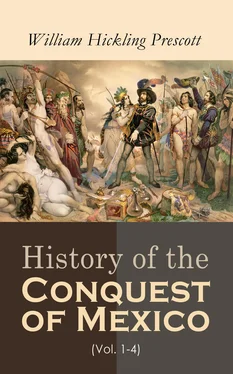In order to appreciate the sensation the book created we must go backward almost two generations and place ourselves in a country which numbered hardly more than eighteen millions of inhabitants—less people than now dwell in the New England States and in the four neighboring Middle States,—New York, New Jersey, Pennsylvania, and Delaware. These people were for the most part scattered throughout the regions bordering upon the Atlantic Ocean and the Great Lakes. Comparatively few were to be found west of the Mississippi River. Texas was an independent republic. California and the lands adjacent belonged to Mexico. The ownership of the vast region then vaguely known as Oregon had not been settled. Alaska was Russian territory. Between the Mississippi and the Sierras of California stretched great wastes of prairie and desert, of mountain and table-land, which now support millions of people, but which even so far-seeing a statesman as Daniel Webster then supposed would never become fit for human habitation. Communication between even the most thickly-settled States was exasperatingly infrequent. The first public telegraph line had not been constructed; the railway system of the country was still in feeble infancy; letters were carried at so much per mile and at a very heavy charge; the postage upon books was exceedingly costly. Only three years had elapsed since the first transatlantic steamship line (the Cunard) had started its pioneer vessel across the ocean. Newspapers for a long time afterwards headed their columns with announcements of news so many “days later from Europe.”
Yet within a year seven thousand copies of the “Conquest of Mexico” were sold in this sparsely-settled country, notwithstanding its slow methods of communication. Boston was acknowledged to be the literary centre of the nation, and Prescott, with the modesty which was his marked characteristic, had supposed that the unlooked-for success which had attended his first literary venture was due to the interest of his personal friends in that city of culture. Such a supposition was no longer tenable. Nor was it possible to ascribe its great popularity to the influence of opinions expressed in Great Britain. The unprecedented success of the book was due not to personal interest in its author, not to the favorable judgment of literary Boston, not to the commendation of the English reviews, but to the merits of the work itself. A wonderful story was told wonderfully well. Men read it and commented upon it as they do not comment upon books at the present time. They discussed it not only on those rare occasions when they met friends from far away, but in the long epistles they sent to those friends,—those letters from which we to-day get so many glimpses of the life of the first half of the nineteenth century. It was passed from hand to hand in the communities where only the envied few were able to buy books, but where all men, in those far less strenuous days, were anxious to read them,—in those days also when the average critical judgment concerning good literature was more highly developed than it now is, and men were much more given to reflection and discussion than they now are.
As has been stated elsewhere, Mr. Prescott was a man of considerable wealth. He was therefore able to place upon his library tables a much larger amount of material with which to work than is ordinarily possible. Not only did he purchase most of the books published upon his subject, but he also secured copies of more valuable documentary material from the libraries and public archives both of Spain and of Mexico,—in this way gradually accumulating that library which was at his death the finest private collection of books in America.
His method of composition has already been described. First, his hours of work with his secretary were scrupulously observed each day; then came the hours of reflection and of careful sifting of authorities before pen was placed upon paper, followed by still more careful reflection before the final copy was written. The tendency to hero-worship which he shared with most American, and indeed with most British, writers became much less marked as his chapters increased,—though surely he may well be pardoned for rejoicing as he does in the exploits of one of the greatest generals in European history. It was perhaps admiration for that great captain which led him to write the history of his conquests.
In reading the “Mexico” we must always remember that the task to which Prescott devoted his energies was to give an accurate account of the stupendous campaigns through which Cortés made himself master of the lands of the Aztecs, and not to describe minutely the institutions Cortés encountered in the Valley of Mexico. An account of the habits, customs, and laws of the people of that valley was essential to a proper comprehension of the magnitude of the Conquest. That account Prescott constructed with material gathered from all available sources, realizing all the while how very unsatisfactory those sources were. It fills about half a volume, but, as he says in his first preface, it cost him as much labor, and nearly as much time, as all the rest of his history. This part of the work has been subjected to much severe criticism, of which mention is made in the notes of this edition. Not a few of the conclusions therein set forth have been shown to be erroneous. For example, Mr. Prescott did not understand the institutions of the Aztecs. It would have been most marvellous if he had. And yet it must be said that, notwithstanding the time spent in research since Prescott’s introductory chapters were penned, surprisingly little more is really known to-day concerning the ancient Aztec nation than was known at that time. Writers who rejected his conclusions put forth conjectures without number to supplant them, but most of those conjectures were not founded upon facts. Their authors were for the most part theorists, and not simply searchers for truth, as Prescott was. Until a larger number of the so-called “Codices” shall have been brought to light, and men shall have learned to read them as scholars have learned to read the hieroglyphics of the East, little more absolute knowledge is likely to be secured. It is hardly possible, however, that many more “Codices” will ever be found. If they exist, they are probably lying unnoticed in some obscure monastery in Spain, or under a mass of material, as yet unclassified, in the public archives of that country. Of the many agencies that have worked for their destruction three especially may be noted. First, the climate of the Mexican land, with the innumerable insects that a tropical climate breeds; second, the stern determination of the Mexicans themselves to destroy the memorials of their ancient state; and, lastly, the holocausts of Zumárraga, first archbishop of Mexico, whose hand, as Prescott says, “fell more heavily than that of time itself upon the Aztec monuments.” This prelate, emulating in his achievement the auto da fe of Arabic manuscripts which Archbishop Ximenes had celebrated in Granada twenty years before, burned all the manuscripts and other idolatrous material he could collect in one great “mountain-heap” in the market-place of Tlatelolco. [2]
But when that additional knowledge shall have been attained, it is hardly likely that any man will attempt to write anew the history of the Spanish Conquest. The information secured from the rude pictorial descriptions of the Aztec scribes and from the chiselled inscriptions of the Aztec sculptors will be incorporated as footnotes in subsequent editions of Prescott’s volumes. For even the critics who arraign Prescott most severely for his misconception of Aztec institutions admit that in everything which he wrote concerning the Conquest and the men who took part in it he adhered most carefully to facts and followed conscientiously the narratives of the participants. Those narratives, as Prescott’s most prominent critic (Mr. Lewis H. Morgan) admits, “may be trusted in whatever relates to the acts of the Spaniards and to the acts and the personal characteristics of the Indians; in whatever relates to their weapons, implements, and utensils, fabrics, food, and raiment, and things of a similar character.”
Читать дальше












